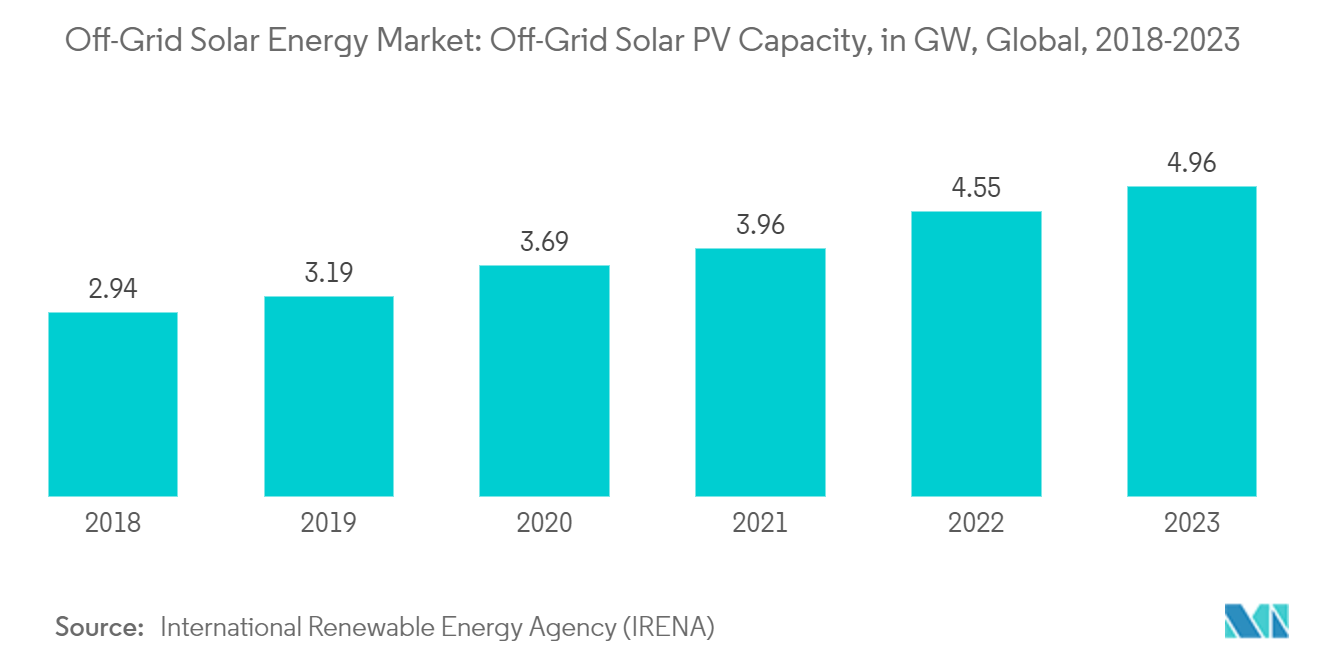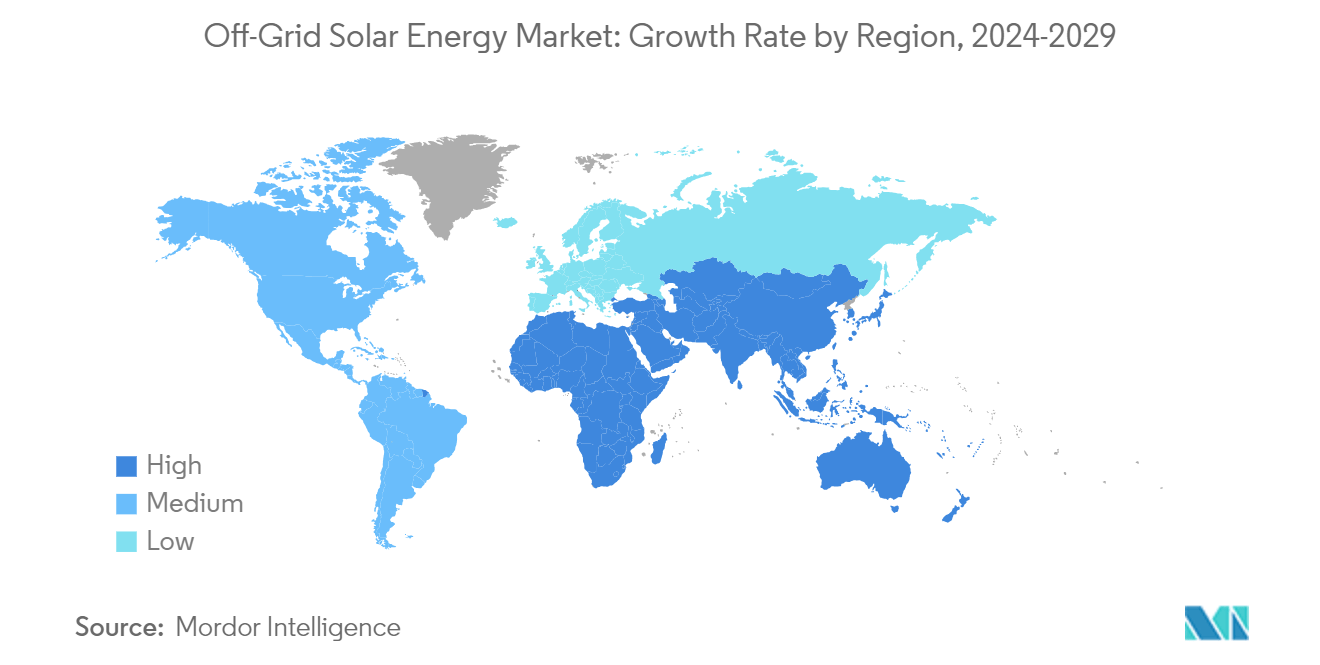Market Trends of Off-Grid Solar Energy Industry
The Commercial and Industrial Segments are Expected to Dominate the Market
- The usage of off-grid solar energy systems in the commercial and industrial segments has been mainly driven by small and medium enterprises in regions with unreliable electricity supply by the central grid system. Battery-integrated off-grid solar systems have become an effective and cheaper method of power backup for commercial and industrial entities compared to diesel generators.
- As of 2023, the global off-grid installed capacity was at 4.96 GW compared to 4.55 GW in 2022, registering a growth rate of almost 9.01%. This growth rate is expected to increase during the forecast period.
- Off-grid solar systems have many advantages for the commercial and industrial segments in terms of no hassle of diesel supply chain delays, less noise and pollution, and favorable government policies and subsidies.
- In addition, once the power is cut off and production is disrupted in several industrial entities, it may take hours to bring the systems and equipment back online, leading to huge downtime and financial losses. Therefore, electricity backup is extensively used in the industrial segment.
- Moreover, with the ongoing Israel-Gaza war, the electricity grid swiftly collapsed after the start of the war, leaving hospitals dependent on diesel generators. With only limited supplies of fuel permitted to pass through the Israeli blockade, it soon became almost impossible to carry out operations and deliver essential healthcare services.
- However, off-grid renewable systems, particularly solar panels combined with battery storage, can be a game changer for the healthcare industry. Off-grid solar offers the promise of bringing power to facilities still out of reach of electricity grids while providing a more efficient and reliable backup supply in urban hospitals.
- As mentioned above, the commercial and industrial segments will dominate the market during the forecast period.

Asia-Pacific to Dominate the Market Growth
- In recent years, there has been a steady increase in solar PV installation in the residential and commercial segments. This is due to reduced capital costs for solar projects and increased competition among competitors as the segments mature.
- China is the world's largest photovoltaics and solar thermal energy market. In 2023, the country had a total installed capacity of 609 GW of solar energy.
- Accordingly, by 2023, the existing residential or commercial buildings were required to install a rooftop solar PV system. Under the government's mandate, a minimum percentage of buildings will be essential to install solar PV systems. The solar PV rooftop systems need to be installed on government buildings (at least 50%), public structures (40%), commercial buildings (30%), and rural buildings (20%) across approximately 676 counties.
- Solar power is a fast-developing industry in India. The country's solar installed capacity was 73.10 GW as of December 31, 2023. Solar power generation in India ranked fourth globally in 2023.
- Due to the rise of industrial activity in India, the demand for clean electricity is increasing to mitigate carbon emissions. As a result, rooftop solar installations would provide a robust option for enterprises to become self-reliant, which is expected to increase the rooftop solar market in India.
- Under the National Solar Mission (NSM), a target of 2 GW was kept for off-grid solar PV applications. During Phase I of the mission (2010-2013), the target was 200 MWp, but 253 MWp was sanctioned. In Phase II (2013-2017), the target was 500 MWp, but 713 MWp was sanctioned. Under Phase III of the Off-grid and Decentralised Solar PV Applications Program, a target of 118 MW has been kept, excluding solar pumps to be installed under the PM KUSUM Scheme and solar home lights taken up under the ‘Saubhagya’ Scheme of the Ministry of Power.
- In January 2023, the country’s Ministry of Trade, Industry, and Energy (MOTIE) approved a long-awaited scheme for solar module recycling. The new regulations set up a uniform system for collecting data in the main regions of each country. It aims to ensure a waste panel recycling/reuse rate of more than 80%, which aligns with current EU levels. Such government schemes are expected to lower the prices of solar panels further in the country, thus making it feasible to use them with different off-grid products.
- Therefore, owing to the above points, declining solar PV prices and increasing energy prices in the region are expected to drive the market during the forecast period. Also, supportive policies and incentives from the government will help the off-grid solar energy market to realize its full potential in the coming years.


